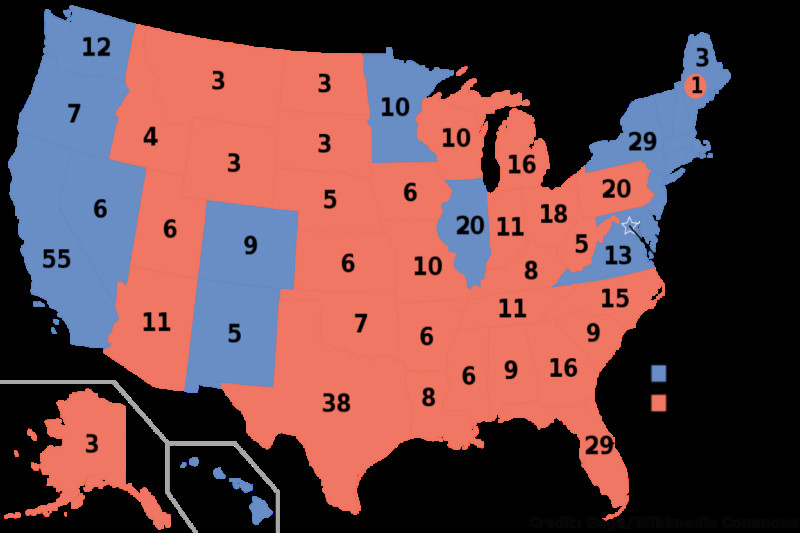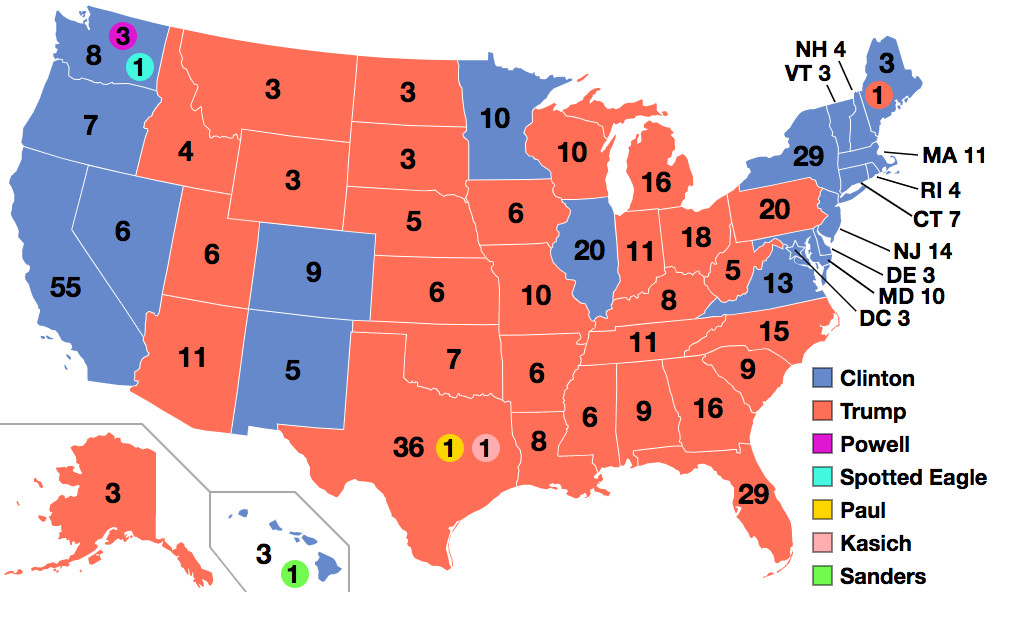Millions of Americans cast their ballots on Election Day, after more than 85 million voted early in the 2024 presidential election. But it's not the popular vote that decides the presidency — it's the outcome of the Electoral College. The Electoral College map may look a little different this year than the one you’re used to seeing — or at least the map from the last three presidential elections. Every 10 years, congressional districts are reapportioned based on population numbers reported in the U.S. census. Since each state’s number of electoral votes is equivalent to its number of Congress members, states that lost or gained members in the House of Representatives based on the 2020 Census will experience the same change in their Electoral College votes.
Understanding the Electoral College
The Electoral College is a system that determines the outcome of U.S. presidential elections. It is composed of 538 electors, a number that parallels the total voting membership of the United States Congress: 435 Representatives, 100 Senators, and three electors for the District of Columbia as granted by the 23rd Amendment.
To win the presidency, a candidate must secure a majority of these electoral votes, which currently stands at 270. The race between Republican former President Donald Trump and Democratic Vice President Kamala Harris will likely come down to a handful of battleground states where voters are closely divided. Of those, Pennsylvania has the most electoral votes at stake, with 19, followed by North Carolina and Georgia with 16 each. Michigan has 15, Arizona has 11, Wisconsin has 10, and Nevada has 6.
How Electoral Votes Are Distributed
Each state's allotment of electoral votes corresponds to its congressional delegation, which is the sum of its senators (always two per state) and its representatives (based on the state's population). The District of Columbia, despite having no voting representation in Congress, has three electoral votes.
Electoral College Shifts in 2024
In total, seven votes got shuffled around, impacting 13 states. This includes three swing states, two of which lost a vote (Michigan and Pennsylvania) and North Carolina, which picked up one. Texas was the big winner, earning two more Electoral College votes.
States That Gained Electoral Votes
- Texas: Gained two electoral votes, bringing its total to 40.
- Colorado: Gained one electoral vote.
- Florida: Gained one electoral vote.
- Montana: Gained one electoral vote.
- North Carolina: Gained one electoral vote.
- Oregon: Gained one electoral vote.
States That Lost Electoral Votes
- California: Lost one electoral vote.
- Illinois: Lost one electoral vote.
- Ohio: Lost one electoral vote.
- Michigan: Lost one electoral vote.
- New York: Lost one electoral vote.
- Pennsylvania: Lost one electoral vote.
- West Virginia: Lost one electoral vote.
Winner-Take-All System
It's a winner-take-all system in most states, meaning the candidate who comes out ahead gets all of the state's Electoral College votes. Maine and Nebraska are the only two states that allow their electoral votes to be split.
Controversies and Debates
Controversy often surrounds the Electoral College, with critics arguing that it can lead to a situation where a candidate wins the national popular vote but loses the election. Defenders maintain that the system protects the interests of smaller states and prevents a concentration of power in more populous urban areas.
The Future of the Electoral College
The Electoral College is a complex and controversial system, and its future remains uncertain. Some argue that the system is outdated and needs to be reformed or abolished, while others defend its role in protecting the interests of smaller states. The 2024 presidential election will likely provide further fuel for this debate, as the outcome of the election may once again highlight the potential for a candidate to win the popular vote but lose the presidency.
The Importance of Every Vote
While the Electoral College may be the system that ultimately determines the winner, it is important to remember that every vote counts. The distribution of electoral votes is adjusted every 10 years following the national census, which can lead to shifts in political power among states due to population changes. This process, known as redistricting or reapportionment, ensures that the Electoral College reflects the demographic makeup of the nation.
Understanding the Electoral College and Voting in 2024
With the 2024 presidential election approaching, it is more important than ever for voters to understand the Electoral College system and how it affects the outcome of the election. By understanding the system, voters can make informed decisions about how to participate in the democratic process and ensure that their voices are heard.


















